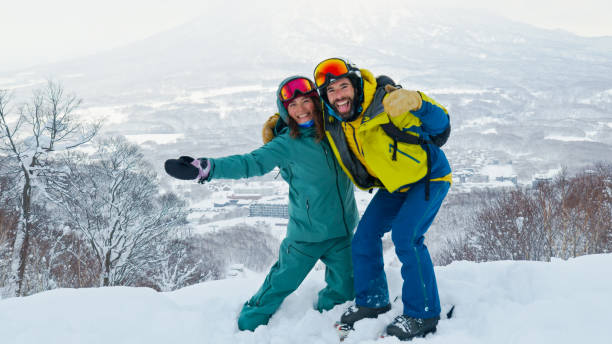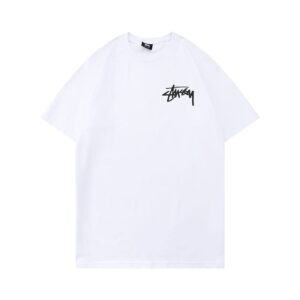
A Japanese woman in her 30s and a white man in his 40s standing in the deep powder snow of Niseko ski resort, with Mount Yotei in the background.
Planning a snowboarding trip to Japan from Singapore is exciting. Japan is famous for its powder snow, scenic mountains, and unique culture. For travelers in Singapore, it offers an opportunity to enjoy winter sports that are not available at home. This guide explains everything you need to know to make your trip smooth and enjoyable.
Why Choose Japan for Snowboarding
Unique Snow Conditions
Japan is known worldwide for its dry powder snow. The cold Siberian winds collect moisture from the Sea of Japan, creating light and fluffy snow. This makes skiing and Japan Snowboarding Trip excellent from December to March.
Accessibility from Singapore
Japan is only about seven hours by direct flight from Singapore. Many airlines provide daily connections to Tokyo, Osaka, and Sapporo. This makes it one of the most convenient destinations for Singapore travelers seeking a winter adventure.
Cultural Experience
A snowboarding trip is not just about the slopes. Japan offers hot springs, traditional food, and local hospitality. Combining winter sports with cultural experiences makes the trip memorable.
Best Time for a Snowboarding Trip
Peak Season
The best snow conditions are usually from late December to February. Resorts are at their busiest during the New Year holidays and Chinese New Year. If you want the best snow, this is the time to go.
Shoulder Season
March is a good choice for fewer crowds and slightly warmer weather. Snow conditions may be less intense, but many resorts still have good coverage. It is also a budget-friendly option.
Off-Peak Travel
November and early December have limited snow. April may still have snow in high-altitude resorts like Hokkaido, but most slopes begin to close. Travelers looking for quieter experiences can still enjoy these months.
Choosing the Right Snowboarding Destination
Hokkaido
Hokkaido is famous for consistent snowfall and wide open slopes. Resorts like Niseko, Furano, and Rusutsu attract many international visitors. The region also offers excellent hot springs and local seafood.
Nagano
Nagano hosted the Winter Olympics in 1998. Resorts like Hakuba Valley and Nozawa Onsen are popular. They are accessible from Tokyo by bullet train, making them ideal for short trips.
Niigata
Niigata has resorts such as Gala Yuzawa and Myoko Kogen. The area is known for easy access from Tokyo and a variety of slopes suitable for different skill levels.
Tohoku Region
The Tohoku area offers less crowded resorts with authentic local charm. Zao Onsen and Appi Kogen are good choices. They provide quality snowboarding experiences with a more traditional atmosphere.
Preparing for the Trip
Travel Documents
Singaporeans can enter Japan for short stays without a visa. Ensure your passport has at least six months validity. Check current entry requirements, as they may change.
Flights
Book flights early, especially during peak winter months. Direct flights to Tokyo, Osaka, and Sapporo are available. Choosing the closest airport to your resort will save time.
Accommodation
Ski-in ski-out hotels are convenient but fill up quickly. Budget travelers can choose guesthouses or nearby towns with shuttle buses. Booking in advance is important, especially around holidays.
Equipment Rental
Many resorts offer high-quality rental gear. Bringing your own snowboard can be costly due to airline baggage rules. Renting is often the most practical choice for travelers from Singapore.
Packing Tips for Singapore Travelers
Clothing
Winter in Japan is cold, especially for those used to Singapore’s tropical weather. Pack thermal layers, waterproof jackets, gloves, and insulated socks. Goggles and helmets are also essential for safety.
Travel Essentials
Bring power adapters for Japanese outlets. Pack medications and small essentials since some items may be hard to find in mountain towns. A pocket Wi-Fi or local SIM card will help with navigation.
Health Considerations
The dry and cold air may cause dehydration and skin dryness. Carry lip balm, moisturizer, and drink water regularly. Travel insurance covering winter sports is strongly recommended. View more.
Understanding Costs
Flight and Accommodation
Flights from Singapore to Japan range from budget to premium options. Accommodation costs vary widely. Ski-in ski-out hotels are expensive, while guesthouses and business hotels are more affordable.
Lift Passes
Lift passes are sold per day or for multiple days. Larger resorts may offer discounts for multi-day passes. Prices vary but are generally reasonable compared to other ski destinations worldwide.
Food and Extras
Local food options near resorts include ramen, curry rice, and Japanese hotpot. Dining in Japan is affordable compared to many winter destinations. Extras like lessons or equipment rental should also be factored into your budget.
Snowboarding Lessons and Safety
Lessons for Beginners
Many resorts have English-speaking instructors. Lessons are available for all levels, from beginners to advanced riders. Booking lessons in advance ensures availability during peak season.
Staying Safe
Follow resort rules and stay on marked trails. Weather can change quickly in mountain areas. Carry a map, check forecasts, and avoid backcountry areas unless you are experienced and equipped.
Fitness Preparation
Snowboarding requires stamina, balance, and core strength. Light exercise before your trip will help reduce fatigue and the risk of injury.
Beyond the Slopes
Hot Springs
After a day on the slopes, soaking in an onsen is a relaxing way to recover. Many resorts are located near natural hot springs.
Local Food
Trying Japanese cuisine is part of the experience. Hokkaido is known for fresh seafood and miso ramen, while Nagano offers soba noodles and local sake.
Cultural Activities
Snowboarding trips can be combined with sightseeing. Visit temples, castles, and local markets. Experiencing Japanese culture adds depth to your winter holiday.
Travel Tips for Singaporeans
Language
English is spoken in larger resorts, but learning a few Japanese phrases is helpful. Signage in tourist areas is often bilingual.
Connectivity
Japan has reliable mobile networks. Renting a pocket Wi-Fi ensures access for maps, translation apps, and staying connected.
Budgeting
Setting a daily budget helps control expenses. Cash is still widely used in Japan, especially in rural areas. Carry enough yen for small shops and transport.
Sample Itinerary
Arrival in Tokyo or Sapporo
Check into your hotel and rest. Explore local restaurants nearby.
Travel to Resort
Take a bullet train or domestic flight to your chosen resort area. Rent equipment if needed and explore the village.
Snowboarding Days
Spend your days on the slopes. Join lessons if required. Relax in hot springs after snowboarding.
Cultural Exploration
Take a day to visit nearby towns or cultural sites. Enjoy local food and markets.
Return to Singapore
Travel back to Tokyo or Sapporo and catch your flight home.
Conclusion
A snowboarding trip to Japan from Singapore is a rewarding experience. With careful planning, you can enjoy world-class snow, Japanese hospitality, and cultural exploration in one journey. From choosing the right resort to packing the right gear, preparation ensures a smooth holiday. Whether you are a beginner or an experienced snowboarder, Japan’s mountains offer unforgettable memories.
